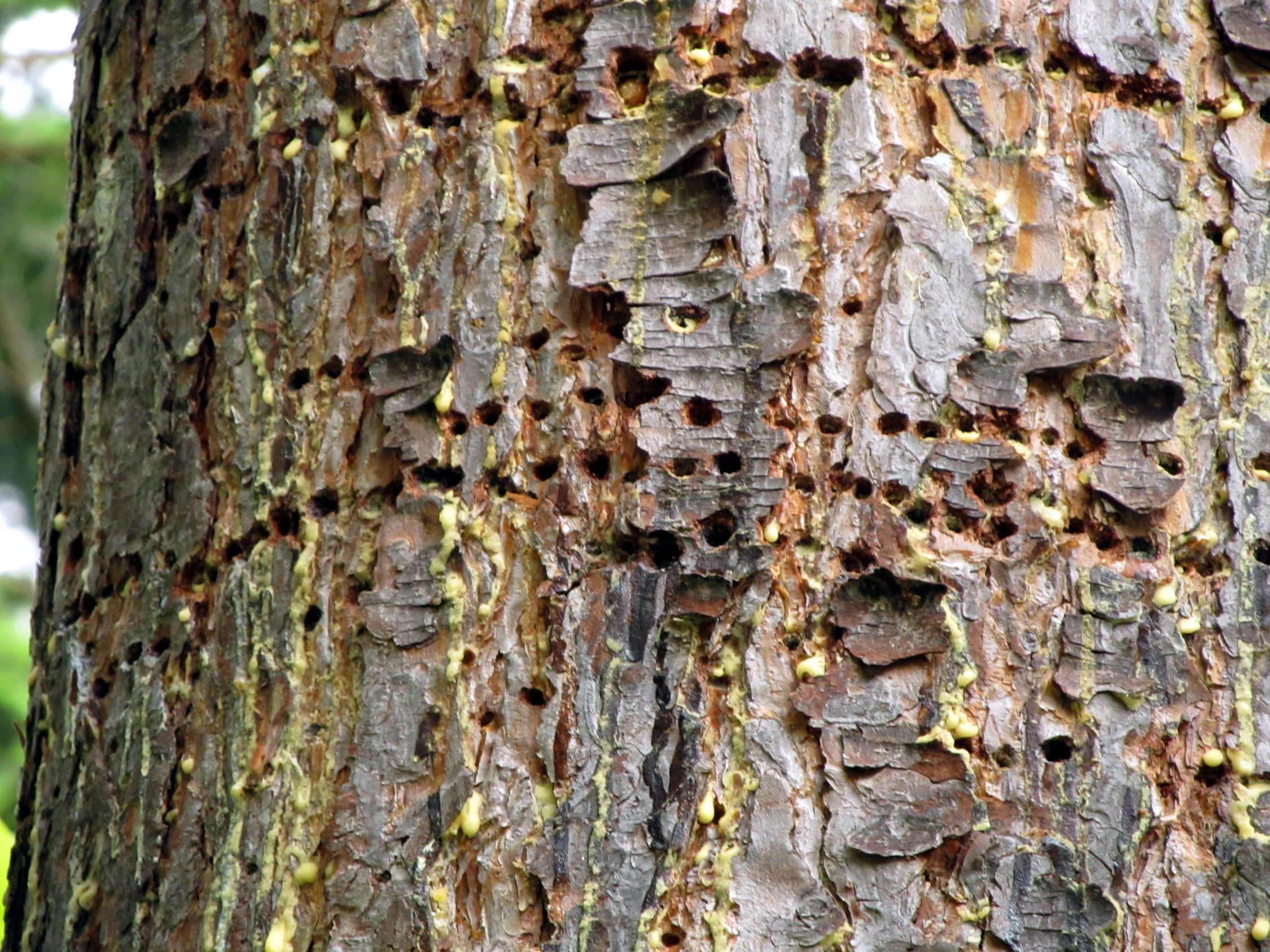Austrian pine is susceptible to a number of disease and insect problems. These include Diplodia (Sphaeropsis) tip blight, pine wilt nematode (a fatal pest) and Zimmerman pine moth. Austrian pine is not recommended for planting anywhere in the Midwest. This species is native to Europe, but was introduced into American landscapes and was widely used for many decades. It is no longer recommended because of its susceptibility to insect and disease problems.
To find suitable replacements for this tree, go to The Morton Arboretum’s tree and plant finder. Before purchasing or planting, be sure to check for any local or state guidelines, and ensure that this plant is suitable for its habitat by reviewing planting considerations or by finding it in the USDA Plants Database.
Austrian pine trees are a popular ornamental tree, known for their resilience and attractive appearance. However, like any plant, they can be susceptible to infestations of insects and other arthropods. As an Austrian pine tree owner, it can be concerning to notice little bugs crawling on your tree’s bark, needles, or cones. Identifying what these bugs are is the first step to determining if they are harmful pests that require treatment or benign species that can be left alone. In this article, we will explore some of the most common little bugs that inhabit Austrian pine trees and provide recommendations for managing them.
Aphids
One of the most frequent little bugs encountered on Austrian pines are aphids. These tiny soft-bodied insects come in a variety of colors like green, black brown, yellow, or white. They feed on pine sap by inserting their straw-like mouthparts into the tender needles and stems. The most noticeable signs of an aphid infestation are sticky honeydew residue and growth distortions or yellowing of the foliage. Treatment options for aphids include spraying insecticidal soap, natural oils, or an application of systemic insecticide for lasting protection. Ladybugs also prey on aphids and can be introduced as natural pest control.
Pine Bark Adelgids
Closely related to aphids, pine bark adelgids are tiny insects that can be found protected under whitish, cottony masses on branches or trunks. The most common species, the Cooley spruce gall adelgid, is a major pest of Austrian pines throughout the eastern U.S. Their feeding causes gout-like swellings on the twigs called galls. To control pine bark adelgids, thoroughly apply horticultural oil or insecticide to the tree to penetrate the cottony covering and suffocate the insects. Removing heavily infested branches also helps reduce spread.
Scale Insects
Armored scale insects are small, immobile pests that attach themselves to pine needles and stems to feed on sap. Their waxy, hard protective coating camouflages them and makes chemical control difficult. pineapple scale and oystershell scale are two common scale species affecting Austrian pines. indications of an infestation are yellowing needles, premature needle drop, and sticky honeydew. Dormant oil applications in early spring before bud break are most effective at smothering scales Systemic insecticides can also offer some suppression when applied according to label directions.
Pine Needle Miners
These small caterpillars burrow inside pine needles to feed, creating brown bands or swelling. On Austrian pines, the most troublesome species is the pine needle sheathminer. The larvae hollow out the needle sheath, causing discoloration and needle drop. Natural predators like parasitic wasps normally keep miners under control. If needed, Bacillus thuringiensis (Bt) insecticide applied when larvae are active in spring can reduce damage.
Pine Sawflies
Pine sawfly larvae are caterpillar-like defoliators with six abdominal prolegs that voraciously feed on pine needles. Outbreaks can quickly strip Austrian pines of foliage. Two common species are the European pine sawfly and the yellowheaded pine sawfly. Mechanical removal of larvae spraying insecticidal soap or using spinosad insecticide when larvae are young provides management. Avoid excessive fertilization and prune for good air circulation to reduce sawfly problems.
Pine Bark Beetles
Several species of pine bark beetle attack stressed Austrian pines, including the southern pine beetle, ips engraver beetles, and turpentine beetles. Adults tunnel under the bark, damaging tissues. Red-brown boring dust and pitch tubes are signs of an active infestation. Maintaining tree health through proper care minimizes susceptibility. Insecticides are ineffective once beetles are under the bark. Remove and destroy severely infested trees to prevent spread.
Pine Needle Midges
These tiny flies resembling mosquitoes cause distorted, twisted needles on Austrian pines. The larvae feed inside developing needles, stunting their growth. Cosmetic damage from midges rarely affect overall tree health. No controls are typically recommended. Midges naturally occur on pines and outbreaks are sporadic. Planting resistant varieties can prevent issues in highly prone areas.
Mites
Mites are tiny arthropods related to spiders and ticks. Spider mites are common foliar pests that feed on Austrian pine needles, causing stippling damage. Rust and gall mites also affect pines. Maintaining vigor through proper cultural practices allows trees to tolerate mites. In severe cases, miticide sprays like horticultural oils or insecticidal soap provide control when applied thoroughly.
By learning to recognize common pine-dwelling bugs, Austrian pine owners can monitor trees vigilantly for early signs of infestation. Addressing issues before they escalate using integrated pest management, tree health best practices, and selective treatments minimizes harm to trees and prevents population explosions. With proper identification and care, little bugs on your Austrian pine can be managed for the continued beauty and longevity of this stately tree.

Austrian Pine (115-U*1 is in the Plants of Acid Soils-USE Ericaceae
East Side and West Side
Find on the Map
Enter keywords to search on the arboretum map.
How to Save Your Diseased Pine Trees
FAQ
What is the pest of the Austrian pine?
How do you get rid of pine tree bugs?
What is the problem with the Austrian pine tree?
What are pine mites?
